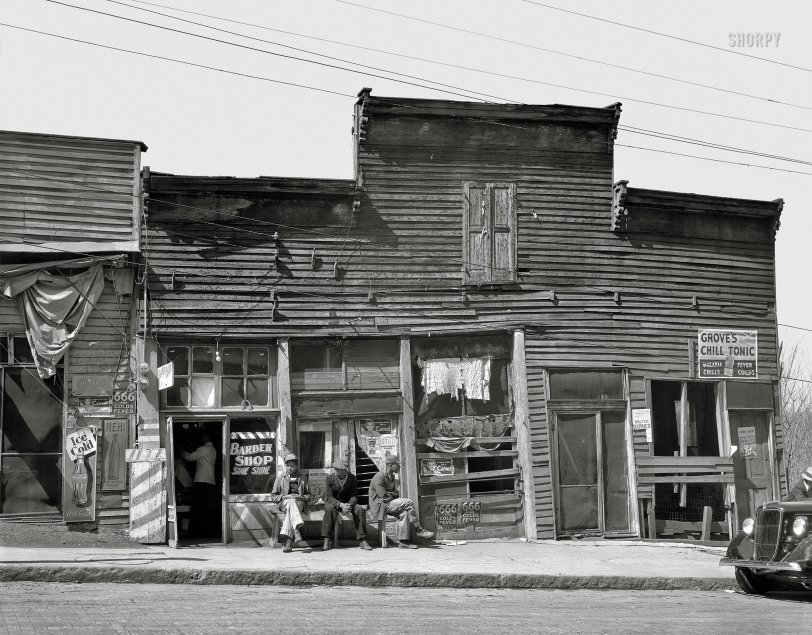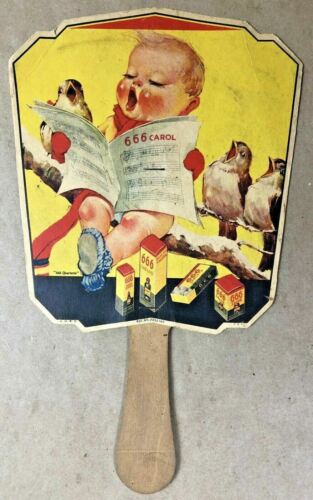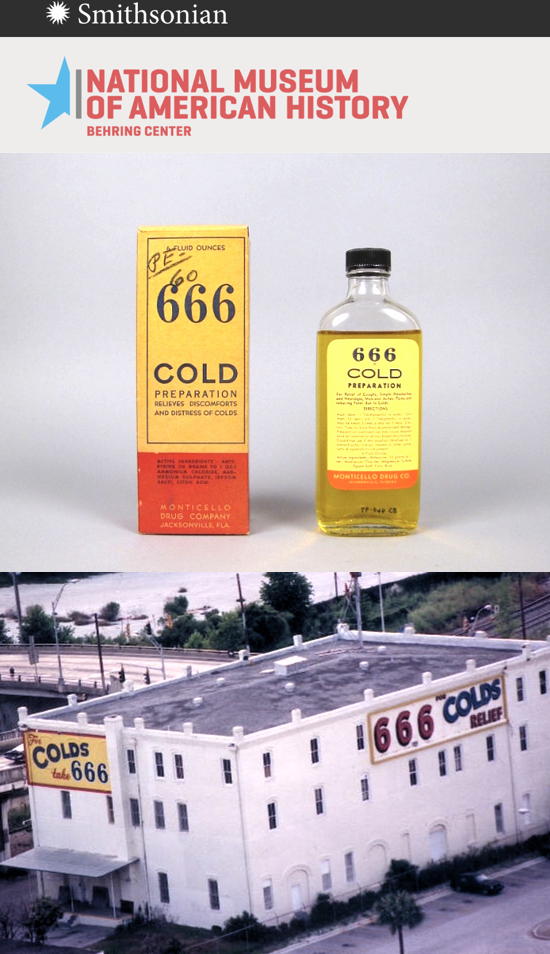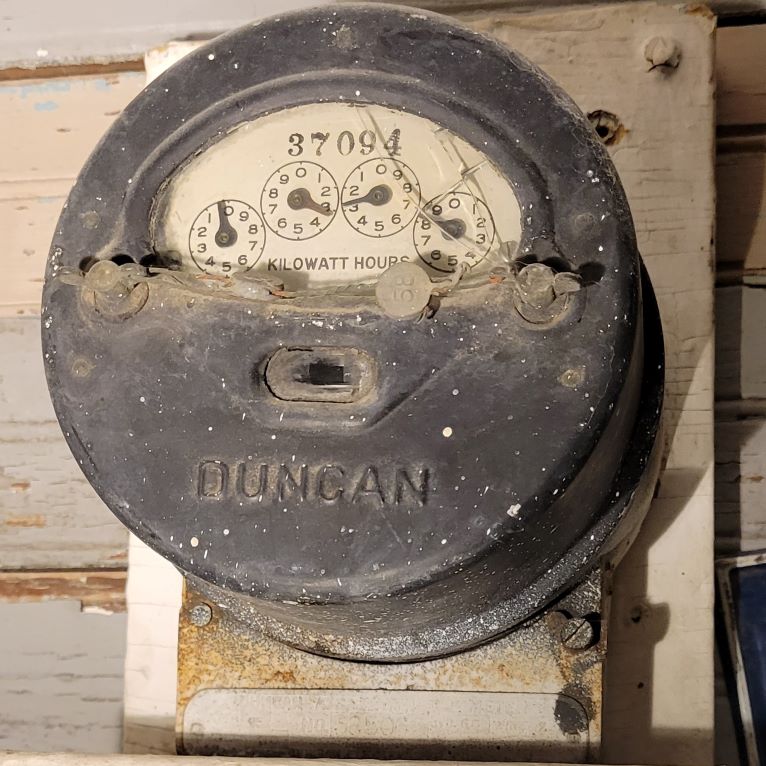


Framed or unframed, desk size to sofa size, printed by us in Arizona and Alabama since 2007. Explore now.
Shorpy is funded by you. Patreon contributors get an ad-free experience.
Learn more.

- Roll your own
- Rugged and real!
- A Charles Purcell - Mama Cass Connection
- Uncle SAAM
- Obfuscation
- One Chocolate Soldier rode away
- Victor Marquis de la Roche
- The Little House Across Way ...
- Vanderbilt Gates
- Vanderbilt Mansion
- You can still see that gate
- Withering heights for me
- So Jim,
- Top Heavy
- Re: Can't Place It.
- Bus ID
- Since you mention it
- The White Pages ?
- Moonlight Tower
- 1907?
- Fire(men) and Water
- Can't Place It
- Can anyone
- Wings
- Where's Claudette and Clark?
- Overbuilt Rolodex
- One song
- Give Me Wings Please!
- PRR
- Pinball Wizards
Printporium
Strop Mall: 1936

March 1936. Warren County, Mississippi. "Vicksburg Negroes and shop fronts." 8x10 inch nitrate negative by Walker Evans for the Resettlement Administration. View full size.
Liability Row
No responsibility accepted if the building collapses on you.
So much to work with here
I'd love to see this one colorized.
Nail gun proving grounds
Ya'll can have that 666 - I'm going for some Chill Tonic from the good people at Grove's.
Posters and barbers
I see two posters for a movie starring Jeanette MacDonald and Nelson Eddy at the Saenger Theater. This theater opened in 1922 and was destroyed by a tornado in 1953, taking the lives of five of the children watching a movie.
I see one poster for a performance by Walter Barnes. Born in Vicksburg, Barnes was raised in Chicago and became a jazz clarinetist, saxophonist, and bandleader. In the 1930s he and his 16-member ensemble toured the South, helping originate what became known as the “Chitlin Circuit.” In 1940 Barnes and all but two of his musicians were killed in a fire at the Rhythm Club in Natchez, Mississippi.
I think the nails are there so you’ll know where to get a nail when you need one.
I believe this photo of Barbershop Row, also taken by Walker Evans in Vicksburg in March 1936, was either up or down the street from the Strop Mall.
Mark of the Beast
Currently I've got a bad case of whatever is going around. Ergo I'm gonna need a case of that 666 stuff.
Pecker Wood?
My first thought was the nails would discourage woodpeckers. Other than that I have nothing.
The 666 nostrum, however vile tasting, receives thumbs up from old timers who used it back in the day.

Shingle nails, probably
I’d be surprised if the front hadn’t been shingles at some point. There’s still a garage across the street from my parents’ house that’s sided with brown, square shingles, maybe about 12”x12”, colored to look a bit like brick.
My Question Exactly
What's the deal with all the nails?
That's a LOT of nails, and they aren't arrayed in any sort of pattern that makes any sense to me. It's more like a tornado blew them against the side of the building.
At home with 666
I was curious about whether 666 Cold Preparation is still available. It seems not: the internet lists it but always as unavailable.
Still, I found it, in a way, near where I live: at the Smithsonian. And I discovered that 666 was headquartered in my home town of Jacksonville (where it moved in 1908 from Monticello, Florida). Large signs were visible from the Acosta Bridge into downtown; I must've seen these hundreds of times, which perhaps it why I get a warm (cold?) feeling when it turns up on Shorpy.

Difficult
to believe that 666 was a popular product in the Bible Belt, even if you had one devil of a cold.
Electric meter ID
Walker Evans, in his 1936 photos of Black-owned Mississippi businesses, accidentally captured some interesting views of a pivotal time in the history of electricity metering. In 1933, Westinghouse introduced the Type CS, with a "future-proof" socket mount which became an industry-wide standard the following year, and remains so today. To speed adoption by utilities, Westinghouse licensed the socket mount design, but retained the right to supply conversion kits, which were available for all 1914-1934 single-phase meters by the four largest manufacturers.
Here we see two stacked meters in what was called a "meter loop". Many electricians still use that term, even though we've forgotten the original meaning. In this case, the wire loops down to the meter, and then back up to feed an existing service that previously had the meter indoors. You can see four wires at the top of the riser: hot and neutral in, then two metered hots back out, to serve the two customers. It's 120 volts only, of course.
The top meter is a General Electric I-16 (1927-1934). The one on the bottom, I'm pretty sure, is a Duncan MD (1926-1934), although it might be the earlier M2 (1915-1926). I don't think I've ever seen a glass-covered M2, and I don't know what the insides look like. I do happen to own an M2, with a 1919 serial number. I could easily open it up and look, but I don't want to destroy the intact 1958 lead seal.


























On Shorpy:
Today’s Top 5